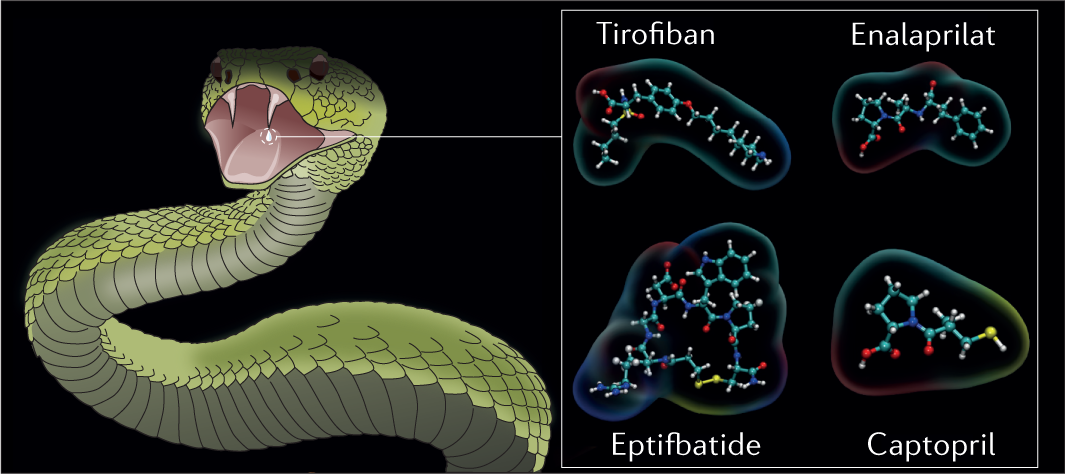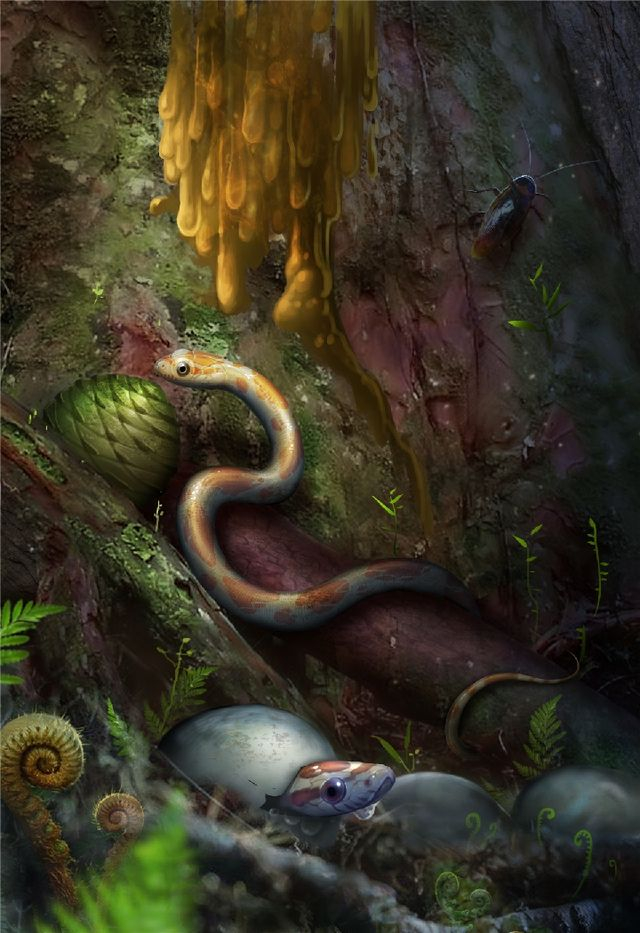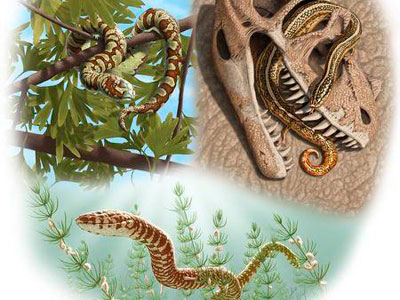According to a new study published online in the journal BMC Evolutionary Biology, the most recent common ancestor of all snakes was a nocturnal, stealth-hunting predator that had tiny hindlimbs with ankles and toes.

Artist’s rendering of an ancestral crown-group snake and the early mammal Yanoconodon. Image credit: Julius Csotonyi.
“We infer that the most recent common ancestor of all snakes was a nocturnal, stealth-hunting predator targeting relatively large prey, and most likely would have lived in forested ecosystems in the Southern Hemisphere,” said Dr Allison Hsiang of Yale University, lead author on the study.
Dr Hsiang and co-authors assembled the most comprehensive dataset to date combining genetic and anatomical data from living and fossil snakes. This dataset allowed them to evaluate the early evolutionary history of snakes using cutting edge computational techniques, in order to generate the first analytical reconstruction of the common ancestor of all snakes.

The results strongly suggest that snakes originated on land, rather than in the seas, as the oldest snake fossils currently known – Coniophis, Najash, and Dinilysia – are all terrestrial.
“Our analyses suggest that the most recent common ancestor of all living snakes would have already lost its forelimbs, but would still have had tiny hind limbs, with complete ankles and toes. It would have first evolved on land, instead of in the sea. Both of those insights resolve longstanding debates on the origin of snakes,” said study co-author Daniel Field, a PhD candidate at Yale University.

“Unlike modern snakes such as the boa constrictor, the ancestral snake had yet to evolve the ability to manipulate prey items much larger than its head, and could not yet constrict its prey,” Dr Hsiang and Daniel Field added.
As for whether snakes evolved on the ancient supercontinent Gondwana or Laurasia, the study suggests an intriguing possibility: while the most recent common ancestor of living snakes likely originated in the Southern Hemisphere around 100 million years ago, the most recent common ancestor of all animals, living or extinct, that is more closely related to living snakes than to any other group may have inhabited Laurasia about 128.5 million years ago (Early Cretaceous period).

“Snakes were around during the latter portion of the age of dinosaurs, which means that they, too, experienced the catastrophic bolide impact that marked the end of the Mesozoic era, resulting in the complete extinction of non-avian dinosaurs,” the paleontologists said.
“However, our results suggest that snakes actually did quite well for themselves in the wake of this extinction event: henophidian snakes seem to undergo a major and extensive radiation following the extinction event.”
“Most likely, the ancestors of modern henophidian snakes were able to take advantage of the relatively empty landscape left behind by the dinosaurs. They had free reign to fill up whatever empty niches they could, just as mammals did, after the demise of the formerly ecologically dominant dinosaurs.”
Source: sci.news








